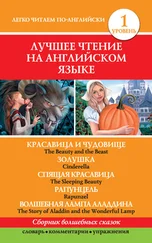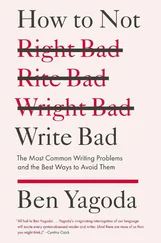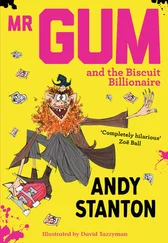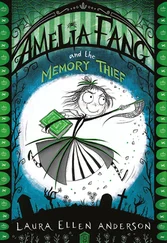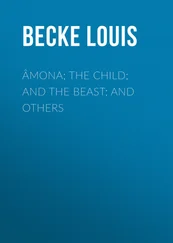Schleifer had portrayed me in a white tunic and he’d thrown a deep-blue veil over my head.
I had a friend who particularly loved this portrait. He persuaded me to give it to him and he took it to his estate in the province of Kovno. [6] Then one of the north-western provinces of the Russian empire, now a part of Lithuania—Kovno in Russian, Kaunas in Lithuanian.
A true aesthete, close to Mikhail Kuzmin, he hung it in the place of honour and always stood a vase of flowers beneath it.
In 1917 he heard that the peasants had looted his house and gone off with all his books and paintings. He hurried back to his estate to try to rescue his treasures.
He managed to track down a few of them. In one hut he found my portrait, hanging in the icon corner beside Saint Nicholas the Miracle Worker and the Iverskaya Mother of God. Thanks to the long white tunic, the blue veil and the vase of dried flowers, the woman who had taken this portrait had decided I was a saint and lit an icon lamp before me.
A likely story…
The palmists were right. I’ve never been able to hold on to anything. Neither portraits, nor poems dedicated to me, nor paintings I’ve been given, nor important letters from interesting people. Nothing at all.
•
There is a little more preserved in my memory, but even this is gradually, or even rather quickly, losing its meaning, fading, slipping away from me, wilting and dying.
It’s sad to wander about the graveyard of my tired memory, where all hurts have been forgiven, where every sin has been more than atoned for, every riddle unriddled and twilight quietly cloaks the crosses, now no longer upright, of graves I once wept over. [7] In 1951 Teffi sent the manuscript of My Chronicle , her collection of short memoirs about writers and other important figures she had known, to the Chekhov Publishing House in New York. The book was not published and the manuscript she sent is now lost. It is, however, possible to establish the titles of many of the articles included—many of them already published in journals. The last paragraph of this memoir of Repin suggests that this piece was intended as a conclusion to the book as a whole.
Probably written 1950–52 Translated by Robert and Elizabeth Chandler
LIST OF HISTORICAL FIGURES
LEONID ANDREYEV (1871–1919): an acclaimed writer of short stories, plays and novels, one of the most important figures of Russian literature’s “Silver Age”.
KONSTANTIN BALMONT (1867–1942): one of the founders of Russian Symbolism. He and Teffi’s older sister Mirra Lokhvitskaya were intensely—though probably platonically—emotionally involved during the last ten years of her life.
DEMYAN BEDNY (1883–1945): a revolutionary poet and satirist. Bedny (a pseudonym) means “poor”.
ANDREI BELY (1880–1934): a Symbolist poet and novelist, best known for his novel Petersburg .
NIKOLAI BERDYAEV (1874–1948): a religious philosopher. A Marxist as a young man, he went on to adopt a position that has been described as Christian Existentialist. He was expelled from Soviet Russia in 1922.
J.-WLADIMIR BIENSTOCK, né Vladimir Lvovitch Binshtock (1868–1933): a Russian-born writer and translator into French.
ALEXANDER BOGDANOV (1873–1928): a revolutionary and cultural activist, the founder of the proletarian art movement Proletkult (1918–20).
VALERY BRYUSOV (1873–1924): a prominent poet and critic, among the founders of Russian Symbolism. One of the few Symbolists to give his wholehearted support to the Soviet regime.
SERGEI BULGAKOV (1871–1944): a theologian. Ordained into the priesthood soon after the Revolution, he was expelled from Russia along with other philosophers and religious thinkers in 1922.
FYODOR CHALIAPIN (1873–1938): one of the most famous operatic basses of his day.
DON-AMINADO, real name Aminodav Shpolyansky (1888–1957): a poet and satirist. Like Teffi, he wrote for New Satirikon and other pre-revolutionary journals. Like her, he emigrated to Paris, where he continued to publish poems, articles and stories.
VLAS DOROSHEVICH (1864–1922): a journalist, editor and writer of short stories. Teffi devotes several pages of Memories to him.
ANATOLY FARESOV (1852–1928): a member of an older generation of revolutionaries, the “Populist” movement of the 1860s and 1870s.
DMITRY FILOSOFOV (1872–1940): a literary critic, religious thinker and political activist, co-founder and first literary editor of the illustrated journal Mir iskusstva ( World of Art ). Close to both Merezhkovsky and Gippius.
ALEXANDER FINN-YENOTAEVSKY (1872–1943): a revolutionary who assumed the pseudonym Yenotaevsky after being exiled for two years to Yenotaevsk in the Arkhangelsk district.
ZINAIDA NIKOLAEVNA GIPPIUS (1869–1945): a Symbolist poet. Along with her husband Dmitry Merezhkovsky, she hosted an important salon. Always flamboyant, she liked to shock both through her behaviour—insulting her guests and wearing male clothes—and through poems that she herself called “personal prayers” but which others saw as blasphemous. She wrote both under her own name and under several male pseudonyms; the best known was “Anton the Extreme”. After the Revolution, she and Merezhkovsky settled in Paris. “The Green Lamp”, a literary and philosophical society they founded, was attended by many of the most important émigré writers. Teffi ends a separate memoir of Gippius by telling how, after her death, she whispered over her coffin the words, “Friend whom I did not know for long, you did not want to be kind and warm. You wanted to be vicious. Because that is more vivid, isn’t it? As for the sweet tenderness that your soul loved in secret, you hid it in embarrassment from the eyes of others.”
MAXIM GORKY (1868–1936): claimed by the Soviet regime as the father of Socialist Realism, Gorky published his first book, to great acclaim, in 1898. His subject matter was drawn from the lives of the very lowest social strata. From 1905 until 1918 he was closely involved with Lenin and the Bolsheviks, living for much of this period in Capri. His fame as a writer was worldwide and he was able to provide the Bolsheviks with substantial financial support. In 1918, however, he attacked Lenin and the Soviet regime as criminal and tyrannical; for most of the period from 1921 until 1928 he once again lived in exile. In 1932 he accepted a personal invitation from Stalin to return to the Soviet Union. There he became a (possibly reluctant) cultural figurehead for the Soviet regime.
SERGEI GUSEV (1874–1933): a member of the Bolshevik faction from its inception in 1903.
ALEXANDER IZMAILOV (1873–1921): a journalist and literary critic.
LEV KAMENEV (1883–1936): one of the most important of Lenin’s colleagues. A member of the Central Committee during the 1920s, he was shot in 1936, after being sentenced in the first of the Moscow Show Trials.
YEVTIKHY KARPOV (1857–1926): a playwright and theatre director.
MIKHAIL KATKOV (1818–87): a notoriously reactionary journalist.
ALEXANDER KERENSKY (1881–1970): a leading member of the Socialist Revolutionary Party (the SRs); prime minister of the Provisional Government from 8th July until 25th October 1917.
ALEXANDRA KOLLONTAI (1872–1952): a Bolshevik from 1914, famous for her radical views on marriage and sexuality.
ALEXANDER KUGEL (1864–1928): a theatre critic who in 1908 co-founded The Crooked Mirror, a theatre that specialized in parodies and put on two of Teffi’s plays.
ALEXANDER KUPRIN (1870–1938): a popular writer of short stories and novels.
BORIS KUSTODIEV (1878–1927): a painter and stage designer. His portrait of Nicholas II, painted in 1915, can be seen in the Russian Museum in St Petersburg.
Читать дальше

